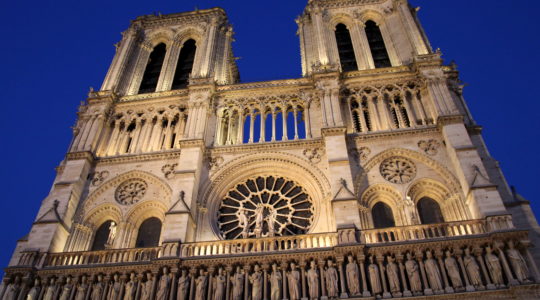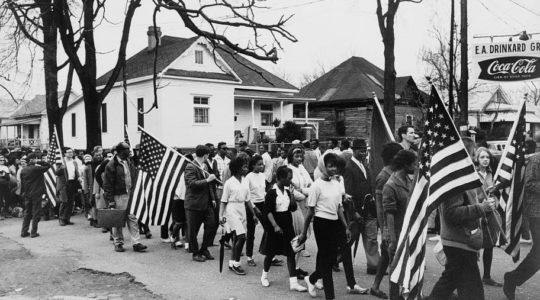A Holocaust exhibit at a prestigious art museum in Zagreb is being hailed as a major step forward in Croatia’s willingness to deal honestly with its World War II history.
Croatian President Stepan Mesic recently inaugurated the exhibit, entitled “The Courage to Remember,” at the capital’s Mimara Art Museum.
“This is not an exhibition for historians, but one for those who want to revise history,” Mesic said in a speech at the opening. “This is not an exhibition for those who know but for those who do not know, and even more so for those who do not wish to know.”
The exhibition has appeared in 19 different countries since it was created by the Simon Wiesenthal Center in 1988, but this is believed to be its first appearance in a post-Communist Eastern European nation.
The Civic Committee for Human Rights, a Zagreb-based NGO that focuses on the recent wars in the Balkans, brought the exhibit to the museum through a grant from the Heinrich Boll Foundation worth nearly $2,000.
Officials hope the exhibit — 40 panels documenting the Holocaust, from the rise of Nazism in 1933 to survivors’ postwar struggles — will travel through Croatia after its stint in Zagreb.
The exhibit’s name “says everything we in Croatia have to be very much aware of, when it comes to our attitude toward history, toward the truth about history,” Mesic said. “Indeed, often one needs courage to remember things past and to admit things that happened. The past can be ugly, and the truth painful.”
The exhibit sparked a small demonstration led by Mladen Schwartz, a Croatian nationalist born to Jewish parents. The theme of the gathering was “Jews out of Croatia.”
Mesic also met with Efraim Zuroff, director of the Simon Wiesenthal Center’s Israel office, who first approached him two years ago about bringing the exhibit to Croatia.
Zuroff encouraged Mesic to initiate a renewed investigation and prosecution of World War II war criminals from Croatia’s wartime Ustashe fascist regime.
They also discussed proposed legislation that will prohibit the exhibition, sale, and use of Ustashe symbols in Croatia. The bill will be presented to the country’s Parliament in coming weeks.
“President Mesic’s leadership role on these issues has been outstanding, and we hope that he will help sponsor additional educational efforts” together with the Wiesenthal Center, Zuroff said.
Some 75 percent of Croatia’s 40,000 Jews were murdered during the Holocaust, most by Croatian collaborators.
Dinko Sakic, who served as one of the commanders of the Jasenovac concentration camp, was convicted in October 1999 of responsibility for the murder of thousands of inmates and sentenced to 20 years in jail, the maximum sentence under Croatian law.
About 85,000 people, including 18,000 Jews, were murdered at Jasenovac, considered the worst concentration camp in Croatia.
JTA has documented Jewish history in real-time for over a century. Keep our journalism strong by joining us in supporting independent, award-winning reporting.
The Archive of the Jewish Telegraphic Agency includes articles published from 1923 to 2008. Archive stories reflect the journalistic standards and practices of the time they were published.



